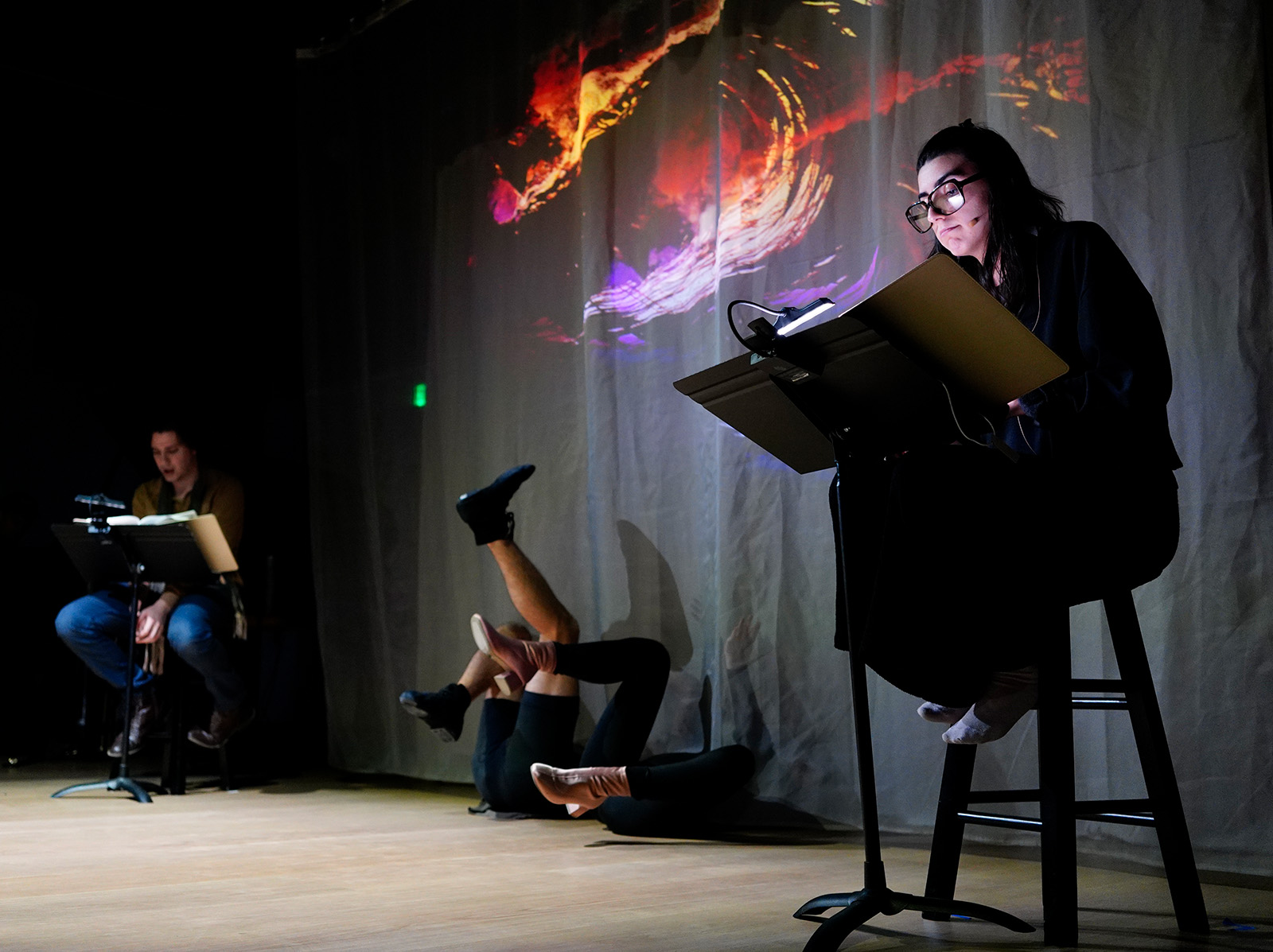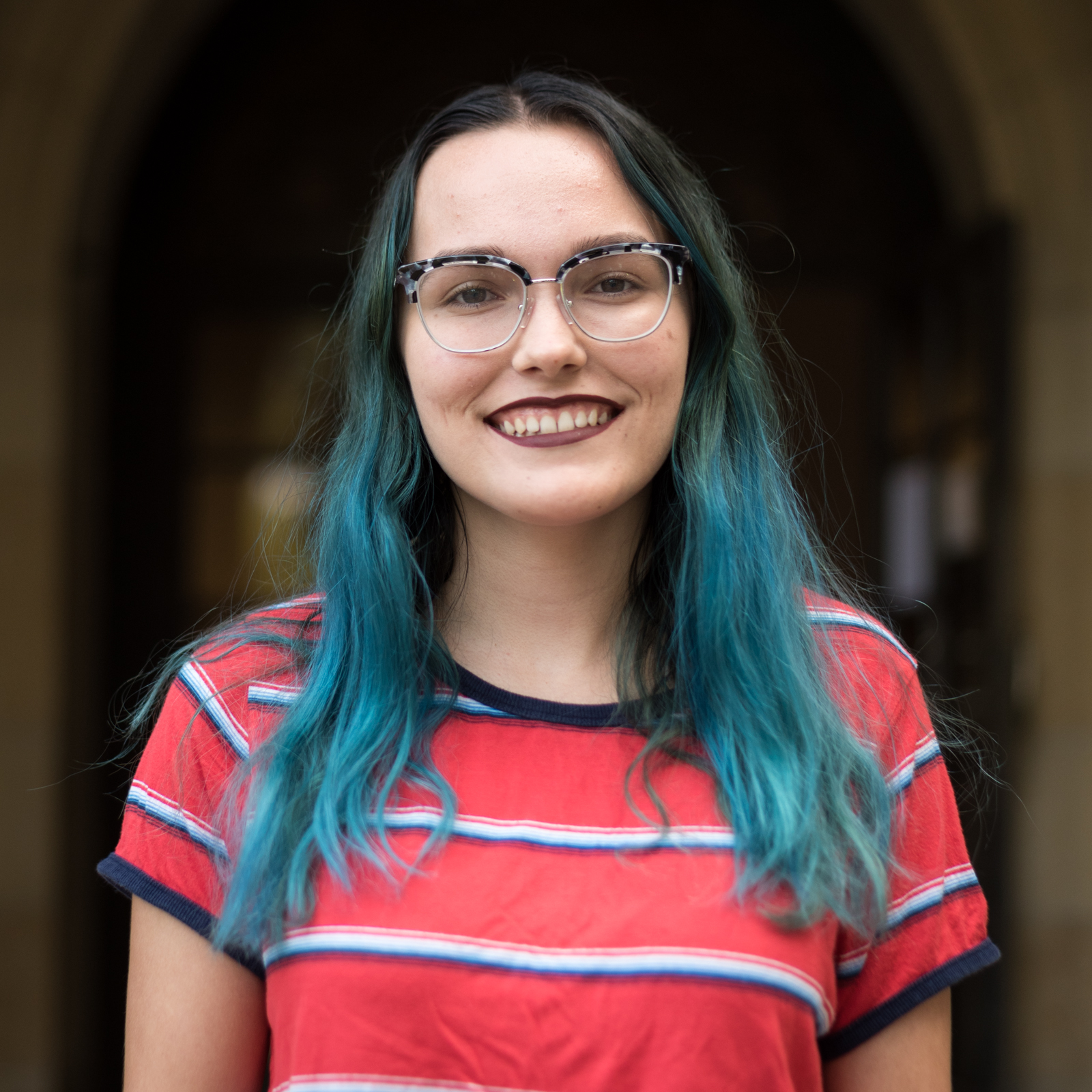Alumna’s performance art exhibition highlights works of Victor Hugo

Theatrical reading is one of the performance art forms featured in the installation “Ceiling of Shadows (La voûte des ombres): A Night of Victor Hugo,” which will highlight Hugo’s artwork and writing. Alumna Vaneh Assadourian, who will be reading English translations of Hugo’s texts, said she aims to help bring Hugo’s stories to life by working with dancers and musicians. (Niveda Tennety/Daily Bruin)
Ceiling of Shadows (La voûte des ombres): A Night of Victor Hugo
Hammer Museum
Today
Free

By Kristin Snyder
Oct. 21, 2018 10:49 p.m.
“An unspeakable ceiling of shadows; a depth of obscurity that no diver can fathom; a light mingled with the obscurity, a strange somber vanquished light; brightness reduced to powder.”
Victor Hugo’s words, found in his work “The Toilers of the Sea,” inspired alumna Darcie Crager to create “Ceiling of Shadows (La voûte des ombres): A Night of Victor Hugo” to accompany the current exhibit on Hugo’s drawings, “Stones to Stains: The Drawings of Victor Hugo.” The performance art installation, taking place Monday evening at the Hammer Museum, will mix excerpts from Hugo’s novels, poems and speeches with original music, dance and shadow play to provide further context for the continuing art exhibit, highlighting the author’s writing alongside his artwork.
“What’s so great about Hugo is that, for the most part, everyone is familiar with his work,” Crager said. “What I wanted to do is take a step up of that and bring it to life, and it’s taking all these classical elements and uplifting it in a modern way.”
When initially selecting the works, Crager said she filtered them through the title: “Ceiling of Shadows.” Much like the artwork on display at the Hammer, the writings that will be highlighted in the production feature dark tones reflecting the more ominous aspects of life. Poetry reflecting on Hugo’s daughter’s drowning, such as the compilation dedicated to her, “Les Contemplations” will be featured in the performance. The chapter selected from “Les Misérables,” one of the novels they will read from, also highlights the theme of the night, as Crager choose one of the final chapters focusing on protagonist and soldier Jean Valjean’s death in the presence of his daughter and son-in-law.
Much of Hugo’s work was politically based, Crager said. Several of the pieces on display feature the silhouette of a hanged man, which Hugo created in response to the highly publicized hanging of a murderer to express his opposition to capital punishment. The haunting nature of the works stuck with her, leading her to tie the theme of the production to the tragic themes Hugo often covers, Crager said.
“It really shows the humanity of who he was, not only as an artist but also as a human being,” Crager said. “It gives audiences a better understanding of who he is, and that a lot of what he did is still relevant.”
Alumna Vaneh Assadourian, who will be reading the English translation of each text, said her role is more focused on narration than performance. However, the production is not solely focused on the text; working in tandem with musicians and dancers, Assadourian said she aims to help bring Hugo’s stories to life. A shadow screen on stage will allow the dancers to mirror the dark silhouettes characteristic of Hugo’s art, also reflecting the somber tone of his writing, she said. The dancers also reflect what physically happens in the text, such as in one scene depicting a battle, where they imitate the struggle by making push-and-pull motions with their bodies, she said.
Crager worked with a French composer to create original music for the production. They based the music off the selected texts, using a combination of cello, piano and guitar melodies to reflect the texts’ classical nature. Some of his works are even read in the original French form to highlight the melody inherent in the test, she said. Some of his work will be read in the original French, highlighting the melody of the words unmarred by translation.
“Especially because the text is so dense, I think it’s really necessary to have the visual and audio aids to allow the audience to get the story in full,” Assadourian said. “They complement each other and make it easier for the audience to digest the piece.”
Co-curator of the “Stones to Stains” exhibit Cynthia Burlingham said combining history and art is important, as it emphasizes the connection between contemporary work and work of the past. Emphasizing Hugo’s political activism of the past allows audiences to see the history of issues still debated today, such as capital punishment, Burlingham said. In highlighting the more political and personal aspects of his extensive collection of work, Crager said she hopes audiences will realize the continued relevance of his writing and art.
“He was really a man of the people,” Crager said. “It’s such a political time right now with so much going on in our country, that having someone be a voice for … another resonated with me.”


